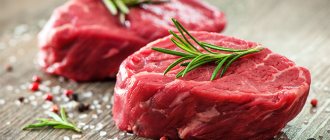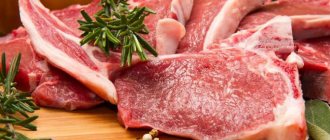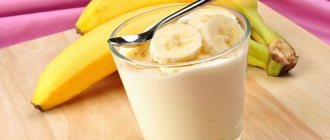A cup of coffee will help you wake up in the morning, invigorate you in the afternoon and give you a burst of strength, energy and mental activity in the afternoon. The delightful aroma and unsurpassed taste have made this drink one of the most popular all over the world. Almost everyone drinks it. However, many people don’t think about how many calories are in coffee, depending on the type and the presence of various additives? Does it have harmful properties and what are they? How much coffee can you drink per day? We will consider the answers to these and many other questions below.
Coffee calories
Calorie content of raw materials per 100 grams, depending on its type:
- granulated, instant coffee - 94 kcal;
- in grains - 223 kcal;
- ground - 201 kcal.
As you can see, the lowest calorie coffee is granulated. On average, take a heaped teaspoon for one cup (200 ml) - this is approximately 8 grams of raw material. It turns out that one cup of granulated instant coffee without milk, sugar, butter or condensed milk contains only 7.5 kcal. By the way, freeze-dried instant coffee has the same calorie content.
Photo source: shutterstock.com
Now let's calculate the energy value of one mug of a drink made from natural beans and ground coffee. To calculate, we again take 1 heaped teaspoon of raw materials per cup. These indicators are adhered to in most recipes for Turks, coffee machines, etc. Accordingly, we will need 8 grams of coffee. We carry out simple calculations and find out that:
- a cup of coffee beans - 17.84 kcal;
- a cup of ground coffee - 16.08 kcal.
However, the nutritional value of coffee in its pure form is low. Let's consider the average indicators of BJU (proteins / fats / carbohydrates) of raw materials per 100 grams:
- granulated, instant coffee - 15/3.5/0;
- in grains - 13.9/14.4/15.6;
- ground - 13.9/14.4/4.1.
As you can see, granulated coffee contains absolutely no carbohydrates, and the amount of protein and fat is low.
How many calories are in coffee without sugar?
How many calories are in a cup of coffee
So now we know that a teaspoon of pure ground coffee contains approximately 8-12 kilocalories, while a teaspoon
instant coffee contains about 2.5-3.5 kilocalories of product. Does the number of calories change during the final preparation of the product, that is, when preparing a coffee drink?
The answer is clear - if it changes, then only to a lesser extent. And these changes are extremely minor.
How many calories are in one cup of ground coffee?
It's very simple - the answer depends on the type of coffee drink. Take, for example, espresso, which is usually brewed from freshly ground coffee.
. Classic espresso is 7-10 grams of product per approximately 30 grams of water. Thus, a cup of espresso without milk and sugar will add 14 to 20 kilocalories to your body.
Fans of double espresso (doppio), which is essentially the same espresso, only with double the amount
water and coffee (that is, approximately 60 grams of water for 14-20 grams of coffee), consumed with one serving of the drink without additives from 28 to 40 kilocalories.
Americano is a coffee drink for those who do not like a very concentrated coffee taste. Essentially, an Americano is a highly diluted espresso or double espresso. Moreover, according to the classic cooking
, it can be diluted in almost half a liter of water. Thus, the calorie content of one cup of classic Americano made from ground coffee is the same 14-20 kilocalories.
How many calories are in one cup of instant coffee drink?
The nutritional energy value of one cup of coffee drink made from instant coffee is extremely scanty
, although it also directly depends on its strength. Usually coffee is diluted in one hundred grams of water. Added one spoon of coffee - consumed about two kilocalories; two spoons – 4 kilocalories.
It is well known that the recommended calorie intake per day for women is 2000 kilocalories, and for men – 2500 kilocalories. Of course, these are average data
, since this norm depends on age, body weight, type of activity, health status, climate and many, many other factors.
Conclusion: then a couple of cups of coffee without additives
per day do not pose any danger in terms of the risk of gaining excess weight.
Calorie content of coffee with sugar
The calorie content of a teaspoon of sugar is 25 kcal. If you add 2 or 3 teaspoons to coffee, the calorie content of the drink will increase by 50 or 75 kcal, respectively. Most often, a couple of teaspoons of sugar are added to a cup of coffee (200 ml).
Photo source: shutterstock.com
Thus, the final calorie content will be as follows:
- granulated, instant coffee - 57.5 kcal;
- in grains - 67.84 kcal;
- ground - 56.08 kcal.
But the nutritional value of sweet coffee will change more compared to bitter coffee without sugar. So, proteins, fats and carbohydrates are equal to 1.29/0.66/9.29 g, respectively.
Soluble product
Even without added sugar and milk, a drink made from granules or freeze-dried crystals has more calories than brewed coffee. The instant product contains practically no caffeic acids, fats, proteins and even caffeine, because it consists of only 15-20% of original natural raw materials. The rest is stabilizers, thickeners, and dyes. These additives make instant coffee more nutritious: on average, it contains from 6 to 12 kcal per one heaped teaspoon.
However, this indicator can vary greatly between different manufacturers. For example, a serving of Nescafe Gold contains only 4.5 kcal, but the same amount of Tchibo Exclusive contains as much as 20.
The nutritional value of instant coffee without sugar is 5-10 times higher than that of a product of natural origin.
Coffee with milk: calorie content
Milk is the most popular additive to coffee. It has less calories than sugar, but it is still worth considering. Moreover, it should be remembered that the numbers vary significantly depending on the fat content of the milk. For example, in 20 ml of milk with a fat content of 1.5% there will be 9 kcal, and with a fat content of 3.2% - 12 kcal.
Photo source: shutterstock.com
Calorie content of coffee with milk with 1.5% fat:
- granulated, instant coffee - 16.5 kcal;
- in grains - 26.84 kcal;
- ground - 25.08 kcal.
Calorie content of coffee with milk 3.2% fat:
- granulated, instant coffee - 19.5 kcal;
- in grains - 29.84 kcal;
- ground - 28.08 kcal.
At the same time, the average nutritional value of coffee with milk without sugar is represented by the following indicators: 1.77 g of proteins, 1.39 g of fats and 2.66 g of carbohydrates.
ABC RECOMMENDS
How many calories are in coffee with milk without sugar?
With sugar and milk
Coffee with milk and various coffee and milkshakes, supplemented with granulated sugar or sweet toppings, should not be perceived as drinks, but as a delicacy. A sweet cappuccino or latte with cake is an unaffordable luxury for those watching their weight.
For example, a sweetened cappuccino that is 2/3 milk contains 150 kcal per 200 ml cup.
- More on the topic: Is it possible to drink coffee on a diet?
The calorie content of coffee with milk (20 ml) and sugar (1 teaspoon) is about 30 kcal.
Instant coffee with milk and sugar contains about 50 kilocalories.
Instant coffee: calorie content
We have already noted above that the calorie content of instant coffee (raw material) per 100 g is on average 94 kcal. However, calorie intake can vary significantly depending on the brand of coffee. For example, Nescafe contains only 88 kcal, Jacobs - 101 kcal, and Japanese Moccona - 109 kcal per 100 grams!
Photo source: shutterstock.com
Based on average indicators, the content of proteins, fats and carbohydrates in a similar volume is 9.57/2.29/9.59 g, respectively.
Natural coffe
Brewed coffee has the lowest calorie content. Depending on the level of grinding and roasting, the drink is brewed differently:
- small. Designed for Turkish coffee. The grains ground into flour make the drink thick. Calorie content – 2 kcal;
- average. Brew in a coffee maker. Espresso and Americano shots contain 1 kcal;
- Coarse grinding is prepared in a French press or in a cup. A dense sediment remains at the bottom and small particles do not enter the oral cavity along with the drink. The calorie content of cooked in Turk is 4 kcal.
Photo: caffevita.ru
The more grains are in the liquid, the more nutrients get into the drink. Ristretto or espresso have minimal calorie content, as they are brewed quickly in a coffee machine. 220 ml contains 1 kcal. When brewing in a filter, in the same volume, it contains an average of 4 kcal. Turk takes the longest to cook, so 200 ml contains 4 kcal.
Different types of grains have their own characteristics. The most common:
- Robusta. The drink is strong and bitter with an earthy aftertaste. Contains 3 times more caffeine than Arabica. It is characterized by low cost due to ease of cultivation;
- Arabica Refers to expensive varieties. Endowed with a wide range of tastes - from sweetish-soft to sharp and tart. It has a refined taste and aroma.
Comparison table for types of grains per 100:
| Robusta | Arabica | |
| Proteins, g | 13,9 | 7 |
| Fats, g | 14,4 | 8 |
| Carbohydrates, g | 29,5 | 0,20 |
| Calorie content, kcal | 331 | 101 |
Arabica is lower in calories compared to robusta. In 200 ml the difference is not significant, only 0.5-1 kcal.
Photo: www.paulig.ru
Differences:
| Robusta | Arabica | |
| Motherland | Congo. First mention 18th century. | Ethiopia. First mention 9th century. |
| Place of cultivation | Grows on plains. | Grown at an altitude of 1-2.8 km above sea level. The higher the tree grows, the richer and more intense the taste of the grains. |
| Appearance | Bush | Tree |
| Grains | Oval | Round |
| Taste | Simple, rough. Bitterness is pronounced. | Rich with bright acidity. |
| Caffeine | Contains 2 times more than Arabica | |
| Production | 35% | 65% |
| Manufacturer | Vietnam | Brazil |
Coffee contains various substances in the following quantities:
| % | |
| Caffeine | 1,5 |
| Tannins | 5,5 |
| Esters of caffeic acids | 6,5 |
| Lemon acid | 1 |
| Trigonelline | 1 |
| Trace elements and minerals | 5 |
| Purine bases | 1,2 |
| Oxalic acid | 0,4 |
| Polysaccharides | 75 |
By the way, girls very often use coffee to wrap their belly and other parts of the body, because it does a good job of breaking down fat.
A cup of natural coffee contains:
- iron – 2 mg;
- vitamin PP – 0.6 mg;
- phosphorus – 7 mg;
- calcium – 5 mg;
- potassium – 9 mg;
- sodium – 2 mg.
We invite you to watch a video about the rules of drinking coffee with Elena Malysheva in the “Live Healthy” program.
It is easy to prepare the ground product yourself to prepare various coffee drinks. To do this, you will need to purchase beans, fry them and grind them in a coffee grinder. A teaspoon contains 5 g of ground coffee, which is 10 kcal. A 250 ml cup of the finished drink contains 2 kcal.
Photo: mnevkusnotut.ru
Coffee latte: calories
There is no single standard for a coffee cocktail - it is made in different ways, in cups from 120 to 480 ml. The calorie content of a latte directly depends on the volume and type of milk used (cow's, almond, soy, coconut or oat milk), as well as on additives (sweeteners, syrups, fillers). However, the average nutritional value of a latte per 100 grams is about 105 kcal, and BJU is 5.02/5.43/9.22 grams, respectively.
Photo source: shutterstock.com
Let's look at the calorie content of latte depending on the brand:
| Name | Volume, ml | Kcal |
| CoffeeHouse, classic | 250 | 111 |
| CoffeeHouse, low fat | 250 | 73 |
| Shokoladnitsa, light | 320 | 125 |
| Chocolate girl | 400 | 220 |
| Coffee mania | 330 | 156 |
| Starbucks, caramel | 480 | 250 |
| Starbucks, with nuts | 480 | 190 |
| McDonald's | 360 | 140 |
| McDonald's | 480 | 210 |
An interesting variety of latte is flat white coffee. Traditionally it is prepared in a thick-walled porcelain cup. Its distinctive feature is voluminous snow-white foam.
Coffee with cream: calories
Many people cannot imagine their morning without coffee with cream. However, 100 ml of cream with 20% fat content contains approximately 205 kcal! 10 ml is usually added to a cup of coffee, increasing the calorie content of coffee by 20.5 kcal.
Photo source: shutterstock.com
Thus, the calorie content of coffee with cream (20%) without sugar is:
- granulated, instant coffee - 28 kcal;
- in grains - 38.34 kcal;
- ground custard - 36.58 kcal.
The average indicators of BJU per 100 grams of coffee with cream are presented as 1.91/5.91/9.94 grams, respectively.
Drink from a bag
The “laziest” method of preparation is a 3-in-1 drink. The bag contains dry vegetable cream, instant coffee, sugar and various additives. One dose, which is recommended to be dissolved in 200 ml of water, contains about 70 kcal.
Calorie table for different coffee drinks
| Coffee, ml | Kcal per 100 grams | Kcal per serving |
| Espresso, 30 | 3 | 1 |
| Ristretto, 15 | 3 | 0,5 |
| Americano, 200 | 0,5 | 1 |
| Natural black, 200 | 2 | 4 |
| Natural with milk, 200 | 7-8 | 15 |
| Natural with milk and sugar, 200 | 15 | 30 |
| Instant black without sugar, 200 | 3-6 | 6-12 |
| Instant with milk without sugar, 200 | 10 | 20 |
| Instant with milk and sugar, 200 | 25 | 50 |
| Coffee from a 3 in 1 bag, ml | 35 | 70 |
Natural, not very sweet coffee with medium-fat milk will not harm your figure, but will be a source of pleasant taste sensations. In addition, in addition to the insignificant 20-30 kilocalories, it contains vitamins and microelements. But a drink from a bag contains a lot of “empty” calories, so it’s better not to drink this product often.
Cappuccino coffee: calories
Cappuccino is a delicious drink containing espresso, sugar and cream. Naturally, its calorie content is extremely high. One 150 ml serving contains 201 kcal.
Photo source: shutterstock.com
Let's look at the calorie content of cappuccino depending on the brand:
| Name | Volume, ml | Kcal |
| CoffeeHouse, classic | 250 | 102 |
| CoffeeHouse, low fat | 250 | 68 |
| Burger King | 300 | 144 |
| Starbucks, cappuccino grande | 480 | 140 |
| McDonald's | 200 | 75 |
| McDonald's | 300 | 125 |
Indicators of coffee with additives
Adding milk significantly changes the consistency and nutritional value of the drink:
- The latte is rich in protein and consists of half milk with a little foam. A large glass of this drink contains 250 kcal if prepared according to the standard recipe. You can reduce the energy value by choosing milk with a lower fat content or by changing the recipe. But then the taste will be lost.
- A cappuccino contains ⅓ milk, ⅓ foam and ⅓ espresso. The drink is prepared in small cups with a volume of 150-170 ml. Strong foam can only be obtained from full-fat milk, otherwise it will quickly settle. A cup of cappuccino contains approximately 211 kcal.
- Rough coffee ingredients: espresso, cream and vanilla sugar. All this is mixed, whipped in a coffee machine or by hand. Due to the small capacity, the calorie content of the finished raf is 85 kcal.
- The unique taste of the ice cream is obtained due to the ice cream in the composition. Sugar is rarely added there and ice cream is used without additives, so the kcal for a cup of coffee is only 155.
- Espresso macchiato is prepared with the addition of milk foam. The foam volume is approximately 15 ml, so the coffee contains 53.5 calories per 100 ml.
- Tore is a type of espresso with high, dense milk foam. Due to this, there are 100 calories in coffee per 100 ml.
- Irish - with the addition of alcohol (various liqueurs or cognac) and whipped cream. There are 60 calories per cup.
Americano coffee: calorie content
Many people prefer to treat themselves to Americano coffee. And it’s not surprising, because it is extremely aromatic, but not too strong. Essentially, the drink project is espresso and water. It does not contain sugar or cream, and therefore the calorie content of the drink is not high at all.
Photo source: shutterstock.com
Let's look at the caloric content of Americano depending on the brand:
| Name | Volume, ml | Kcal |
| CoffeeHouse, classic | 250 | 91 |
| CoffeeHouse, low fat | 250 | 62 |
| Coffee mania | 330 | 131 |
| Chocolate girl | 400 | 190 |
| McDonald's | 360 | 105 |
| McDonald's | 480 | 168 |
Composition and nutritional value of coffee
The nutritional value of the drink is represented by the unique chemical composition of coffee beans, which includes the following beneficial substances:
- alkaloids (trigonelline and caffeine);
- vitamins P, B2, B3 and B5;
- tannins (tannins);
- essential oils;
- mineral salts and trace elements (potassium, phosphorus, calcium, iron, manganese, nitrogen, etc.);
- acids (chlorogenic, quinic, citric, caffeic, oxalic, etc.).
It is also worth considering the fact that during roasting the proportions of elements contained in the grain change and new compounds are formed (for example, vitamins PP). Depending on the type of coffee beans and the degree of roasting, the composition of the drink also differs.
Daily coffee consumption
The daily intake of caffeine for adult women and men is 400 mg, which roughly corresponds to 3 glasses of an invigorating drink. With this volume, no adverse reactions from the central nervous and cardiovascular systems are observed.
Photo source: shutterstock.com
Scientists (children under 16 years of age and pregnant women) caffeine intake should not exceed 300 mg per day, and ideally no more than 200 mg. However, according to the results of statistical studies, modern people consume significantly more caffeine than recommended, and in most cases there are no side effects. But it is still worth remembering that excessive coffee consumption puts a high burden on the kidneys and heart.
ABC RECOMMENDS
How many cups of coffee a day prolongs life?
The benefits and harms of coffee
Why do doctors sometimes recommend including coffee in your diet, while some are asked to refrain from drinking the aromatic drink? The benefits of coffee for the body are invaluable and consist of the following properties:
- increased performance;
- relief from muscle pain after exercise;
- increase in the number of liver enzymes;
- reducing the risk of Alzheimer's disease, type 2 diabetes, gout and cancer;
- protection against free radicals that destroy healthy cells and accelerate the aging process;
- improving gallbladder function and reducing the risk of gallstone formation;
- antibacterial effect, which helps reduce the risk of caries and other dental diseases.
All of the above properties are more characteristic of boiled black coffee, without sweeteners and cream. Green coffee is also considered beneficial.
Photo source: shutterstock.com
But the popular drink can bring more than just benefits. Sometimes it can cause harm if there are contraindications. The harm of coffee to human health is manifested in the following properties:
- disruption of the stomach and pancreas (especially if you drink coffee on an empty stomach);
- difficulty in the work of platelets, which help stop bleeding by clogging the damaged vessel;
- increased blood pressure;
- increased risk of osteoporosis and insomnia (if you drink coffee at night);
- increased anxiety and stress.
Coffee can be especially harmful to women's health, as it can provoke mastopathy. With this disease, lumps form in the mammary glands, which increase in size and hurt during menstruation. All of the above negative properties of the drink manifest themselves mainly when it is consumed on an empty stomach or when the daily norm is exceeded. Don't forget about this if you like to treat yourself to black coffee, latte or espresso.
ABC RECOMMENDS
Not so harmful: 7 myths about caffeine that are still believed










